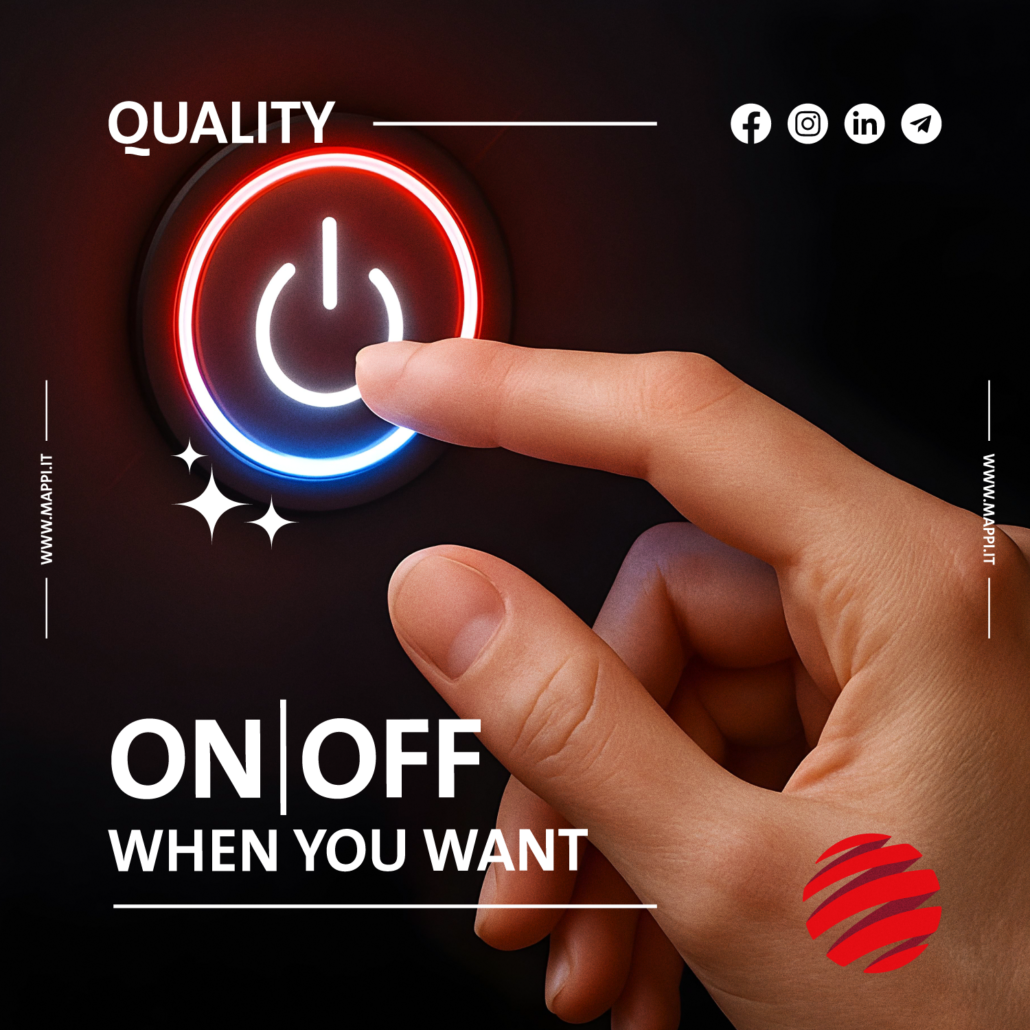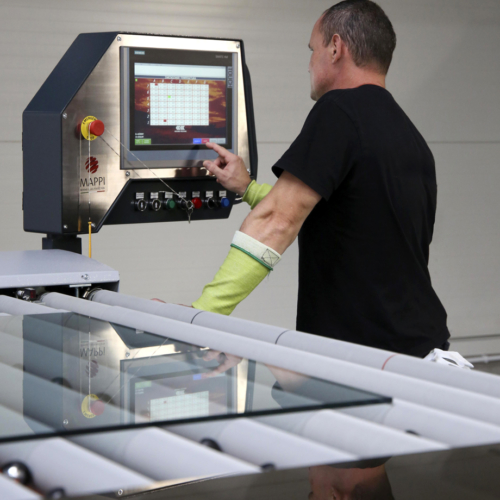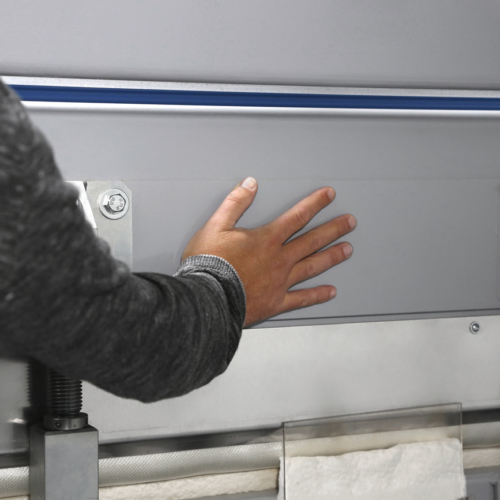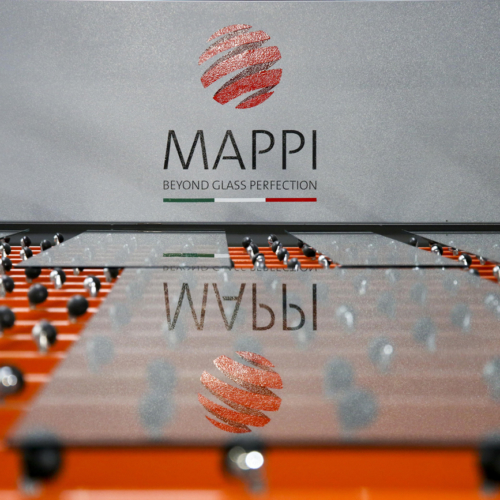POWERING DOWN AND STARTING UP WITHOUT THERMAL SHOCK?
WITH MAPPI, IT’S POSSIBLE (AND WORTH IT).
The possibility of shutting down a glass tempering furnace at the end of the day and restarting it the next morning—without risking thermal shock or facing excessive restart costs—is a hot topic in the industry. Even among seasoned professionals, it often raises questions. Some believe that turning off the furnace can damage metal components or cause such severe heat loss that any potential energy savings are nullified. Others argue that it simply isn’t worth the hassle.
But where do these beliefs come from?
IT ALL COMES DOWN TO THERMAL INSULATION
Glass tempering furnaces operate at extremely high temperatures—typically between 650°C and 700°C, or even higher. If insulation is inadequate, shutting down the furnace causes the temperature to drop rapidly to ambient levels. This steep thermal drop places heavy stress on materials and components. In such cases, we agree: the risks outweigh the benefits.
At MAPPI, however, we use premium-grade, high-performance insulating materials that retain internal temperatures of 450°C and 500°C for many hours after shutdown. This means the furnace cools down very slowly, maintaining a relatively high thermal level for an extended period. This helps prevent extreme or abrupt temperature drops, because while heating a furnace consumes energy, letting residual heat go to waste is a cost no one can afford.
LESS ENERGY TO POWER BACK ON
When a MAPPI furnace is restarted in the morning, the heating process doesn’t begin from room temperature (20°C) but from around 450–500°C. This means the system only needs to recover about 150–200°C, resulting in significant energy savings. At the same time, the steel frame and structural components aren’t subjected to sudden temperature shifts, which drastically reduces the risk of microcracks, deformation, or internal tension.
So how do we make this happen? The secret lies in the precision design of our insulating panels, the selection of materials with low thermal conductivity, and a steel structure engineered to handle controlled thermal variations—rather than the extreme stress caused by full cooling cycles.
From an engineering perspective, the thermal gradient (ΔT) directly impacts the lifespan of furnace components. By reducing the gap between operating and idle temperatures, we help preserve the structural integrity of the furnace, extend its service life, and ensure a long-term return on investment in efficiency and performance.
REAL SAVINGS—NO COMPROMISE
Reduced thermal dispersion leads to real energy savings. No heat is wasted overnight, and far less “fuel” (or electricity) is needed to bring the furnace back to operating conditions. Additionally, the absence of thermal shock results in easier maintenance, lower costs, and less frequent interventions.
SO WHY DO SOME STILL CLAIM THE OPPOSITE?
If a furnace has been built with poor insulation or lower-grade materials, shutting it down essentially resets the temperature to zero, causing harsh structural stress upon restart. Understandably, manufacturers of such equipment advise against shutdowns, instead recommending continuous operation to avoid internal issues. However, this approach comes at the price of higher energy consumption and lower operational flexibility.
At MAPPI, we chose a different path. We have invested in high-quality insulation, advanced materials research, and precision structural engineering. As a result, our customers can safely shut down and restart their furnaces without risk. If someone claims it can’t be done, perhaps their furnaces weren’t built to handle it. Ours are. And this isn’t just a claim—it’s a proven capability that guarantees energy savings, reduced waste, and maximum reliability.
If others can’t do the same, maybe they’ve still got a long way to go to reach our standards of excellence.






